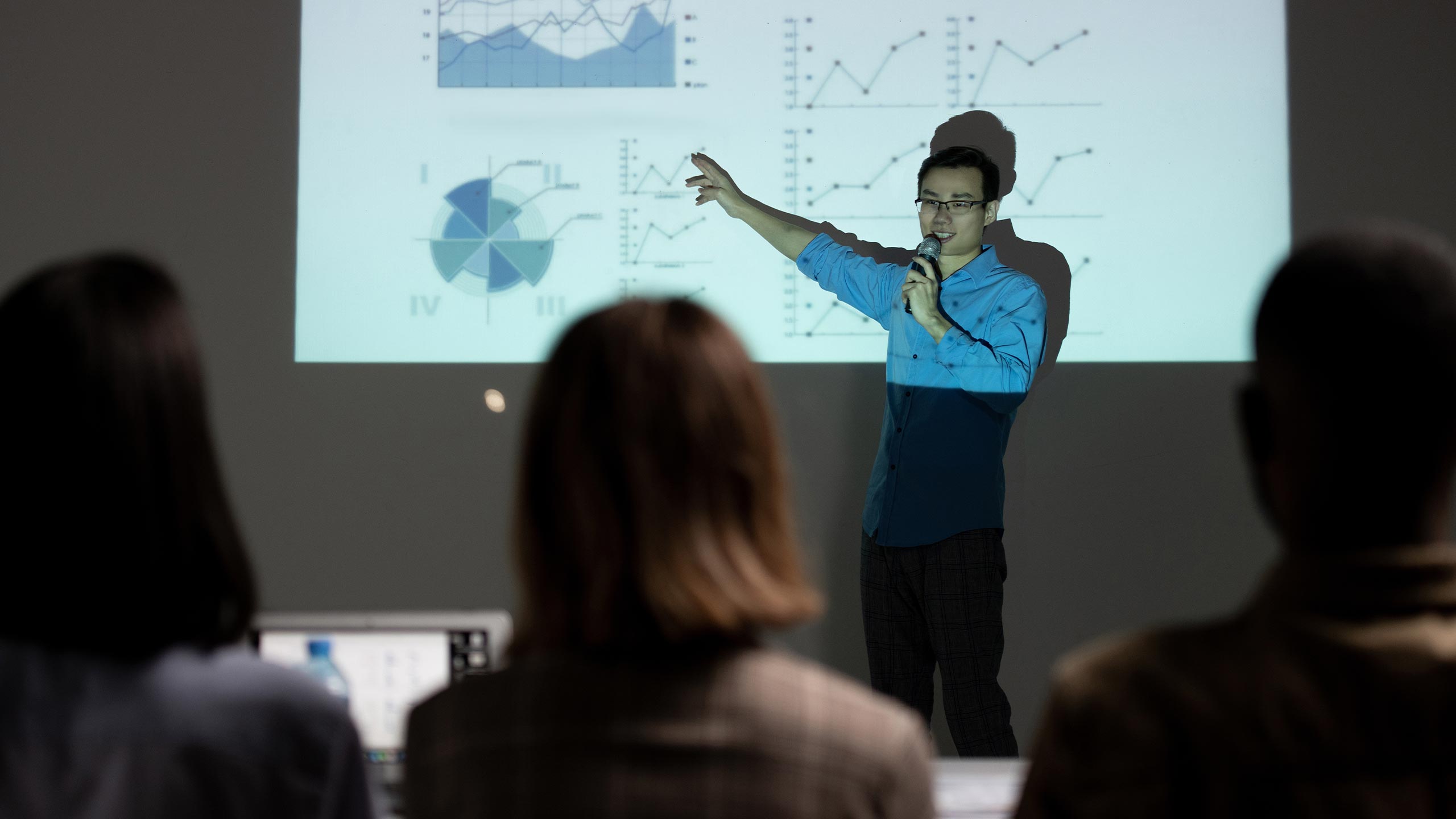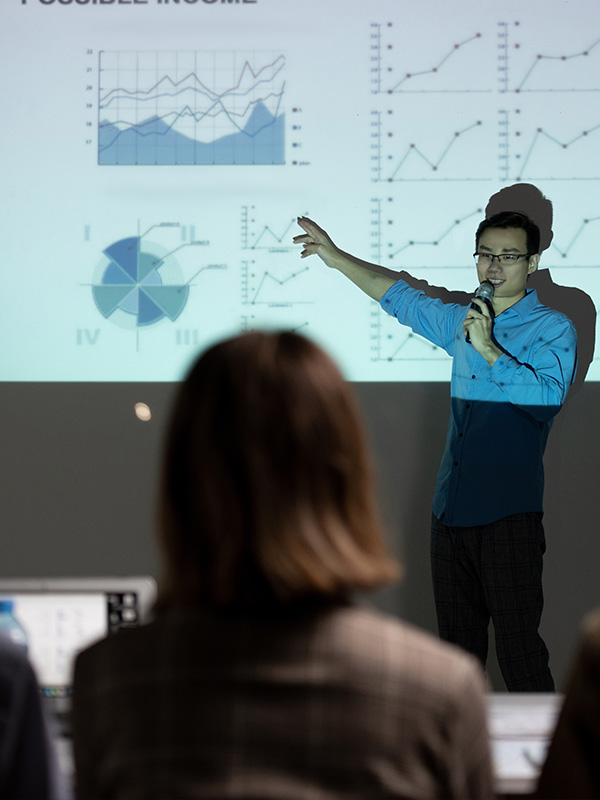

Nowcasting and Forecasting with High-Frequency Information
Real-Time Insights: Nowcasting and Forecasting with High-Frequency Data.
Course Overview
Learn the latest techniques in macroeconomic nowcasting and forecasting, focusing on “special situations” where traditional econometric models fall short. It addresses these gaps, and equips you with the advanced skills needed to analyze and predict economic developments even in highly uncertain scenarios.
Faculty
Discover what makes this Nowcasting and Forecasting course exceptional
Learn techniques to navigate the real world: Navigate and predict economic outcomes during unprecedented events where traditional models fail.
Apply techniques to real-world data: Gain practical experience that makes your skills immediately applicable in professional settings.
Gain practical skills using software tools: Learn MATLAB for time series analysis, enhancing your technical proficiency.
Get guidance and feedback on your own research: From instructors and peers, enhancing your analytical and research capabilities.
Produce forecast and nowcast even when standard techniques fail due to exceptional economic conditions
This program is intended for:
- Masters and PhD students in economics or related fields wanting to use or develop real-time economic analysis tools
- Researchers who want to learn about uncertainty and decision-making in real-time
- Students in any quantitative field wanting an overview of techniques used in real economic analysis to apply in their own field
- Central bank practitioners and those in private and public institutions seeking to update their knowledge and acquire the latest techniques
Learn to analyze current economic conditions and produce forecasts using high-frequency data
By the end of this course, participants will be able to:
- Create your own tools, based on your specific problem
- Inform decision-makers even when uncertainty is high and standard techniques are useless
- Become adept in analyzing computer codes for problem-solving
Program Syllabus for Nowcasting and Forecasting for High-frequency Information
Here is the list of topics that will be covered in the course.
Nowcasting with Standard Economic Data
- Linear framework: Kalman filter. Mixed frequency factor models and VARs
- Non-linear framework: Markov-Switching and Threshold Models. Multivariate time-varying specifications
- MIDAS Models
Challenges of High-frequency Data
- Modeling and forecasting with high-frequency data
- Mixing high-frequency data with standard information sets
- Non-linear high-frequency data models
- Special topics on high-frequency data:
- Data Selection
- Seasonality
- Signal to noise in high-frequency data
Special topic. Machine learning and High-frequency data. Model Comparison
List of References
Below are some resources that may help you prepare for the course.
Books
- James Hamilton. “Time Series Analysis” Princeton. (1994).
- Chang-Jin Kim, Charles R. Nelson. “State-Space Models With Regime Switching: Classical and Gibbs-Sampling Approaches With Applications”. MIT Press (1999).
- Andrew Blake and Haroon Mumtaz. “Applied Bayesian Econometrics for Central Bankers” (2007). Bank of England.
- Helmut Lütkepohl “New Introduction to Multivariate Time Series Analysis”. (2005).
- Fabio Canova.” Methods for Applied Macroeconomic Research” (2007)
Specific references for our course will be: - Eric Ghysels & Pedro Santa-Clara & Rossen Valkanov, 2004. “The MIDAS Touch: Mixed Data Sampling Regression Models,” CIRANO Working Papers 2004s-20, CIRANO.
- Hale, T, A Petherick, T Phillips, S Webster, B Kira, N Angrist and L Dixon (2020), “Oxford COVID-19 Government Response Tracker”, Blavatnik School of Government, Oxford University
- Lewis, D., K. Mertens, and J. Stock. 2020. “Monitoring Real Activity in Real Time: The Weekly Economic Index,” Federal Reserve Bank of New York Liberty Street Economics, March 30.
- Chetty, Raj, John N. Friedman, Nathaniel Hendren, Michael Stepner, and the Opportunity Insights Team (2020). “How Did COVID-19 and Stabilization Policies A§ect Spending and Employment? A New Real-Time Economic Tracker Based on Private Sector Data,” mimeo, Harvard University.
- Perez Quiros, G. and Saiz, L. “Introducing the Eurotracker” ECB Mimeo 17) Gonzales, F, A Jaax and A Mourougane (2020), “Nowcasting aggregate services trade. A pilot approach to providing insights into monthly balance of payments data”, Paris: OECD Publishing.
- Manuel Medina Magro (2022) Nowcasting The USA Real Quarterly GDP Growth With a Seasonally Adjusted Weekly Economic Index. U. of Alicante (mimeo)
- Sercan Eraslan & Thomas G ö tz. (2021). “An unconventional weekly economic activityindex for Germany”. Economics Letters, Volume 204, 109881, ISSN 0165-1765.
- Woloszko, N (2020), “A Weekly Tracker of activity based on machine learning and Google Trends”, OECD Economics Department Working Papers 1634, Paris: OECD Publishing.
- Maccarrone G, Morelli G, Spadaccini S. GDP Forecasting: Machine Learning, Linear or Autoregression? Front Artif Intell. 2021 Oct 15;4:757864.
Articles and Working Papers
- Lewis, D., K. Mertens, and J. Stock (2020): “U.S. Economic Activity During the Early Weeks of the SARS-Cov-2 Outbreak,” FRB Dallas Working Paper, 20-11.
- Christiane Baumeister, Danilo Leiva-León & Eric R. Sims. “Tracking Weekly State-Level Economic Conditions” NBER Working Paper 29003. July 2021 19) Cuevas, Á., Ledo, R. & Quilis, E.M. Seasonal adjustment of the Spanish sales daily data. SERIEs 12, 687–708 (2021).
- Camacho, M. and Perez Quiros G. (2010) “Introducing the euro-sting: Short-term indicator of euro area growth” Journal of Applied Econometrics, Volume25, Issue 4
- Schorfheide, F and Song, D. (2021) Real-Time Forecasting with a (Standard) MixedFrequency VAR During a Pandemic “Real-Time Forecasting with a (Standard) Mixed-Frequency VAR During a Pandemic”. NBER Working paper 29535
- Leiva Leon, D, Perez Quiros, G and Rots, E. Real-time weakness of the global economy a first assessment of the coronavirus crisis. ECB Working Paper 2381. March 2020
- Eo, Y. and C.-J. Kim (2016). Markov-switching models with evolving regime-specific parameters: Are postwar booms or recessions all alike? Review of Economics and Statistics 98 (5), 940–949.
- Bai, Jennie, Eric Ghysels and Jonathan Wright (2010), “State Space Models and MIDAS Regressions.” Econometric Reviews Volume 32, 2013 – Issue 7
Why should you attend BSE Executive Education courses?
All BSE Executive Education courses are taught to the same high standard as our Master’s programs.
Network with like-minded peers from around the world
Short courses allow you to learn without a big time commitment
Try something new and expand your knowledge and career prospects, or advance your thesis
Testimonials
Ioannis Krompas
The course provided valuable insights into leveraging high-frequency data for real-time economic forecasting. I gained a deeper understanding of nowcasting techniques and their practical applications, which I look forward to applying.
Admissions
If you want to apply for this Nowcasting and Forecasting course, ensure you meet the criteria below.
Requirements
- Candidates are assessed on an individual basis according to their professional or academic background
- Students must have their own laptop or desktop computer and good Internet connection to be able to follow and fully benefit from the course
Nowcasting and Forecasting for High-frequency information Requirements
- Knowledge of mathematics and/or statistics at graduate level could help to take further advantage of the course although it is not mandatory
Get up to speed with the latest developments in Nowcasting and Forecasting in a short time.
Course Schedule!
The times listed are Central European Time (CET). Compare with your time zone on time.is
Instructors, topics, and schedules are subject to change.
Week 1
Mon
Tue
Wed
Thu
Fri
Week 2
Mon
Tue
Wed
Thu
Fri
Course Materials and Software
- Every participant will receive a free, limited-time MATLAB license. You’ll need to install it on your computer for practical sessions before the course start date
- Additional materials will also be provided
Certificate
Participants who attend at least 80% of the course will receive a Certificate of Attendance free of charge. Participants will not be graded or assessed during the course.
Fees
A 10% discount applies when the confirmation payment is completed on or before the announced Early bird deadline.
Multiple course discounts are available. Find out more information in our Fees and Discounts pdf.
Fees for courses in other Executive Education programs may vary.
*Reduced Fee applies for PhD or Master’s students, Alumni of BSE Master’s programs, and participants who are unemployed.
FAQ
Need more information? Check out our most frequently asked questions.
Are the sessions recorded?
Sessions will be recorded and videos will be available for a month once the course has finished.
How much does each Executive Education course cost?
Fees for each course may vary. Please consult each course page for accurate information.
Are there any discounts available?
Yes, BSE offers a variety of discounts on its Executive Education courses. See more information about available discounts or request a personalized discount quote by email.
Can I take more than one course?
Yes! you can combine any of the Executive Education courses (schedule permitting). See the full calendar here.
Related Executive Education programs


Macroeconomic Forecasting: Machine Learning vs Time Series Methods

Identifying Dynamic Causal Effects in Macroeconomics
Economics. All rights reserved.






